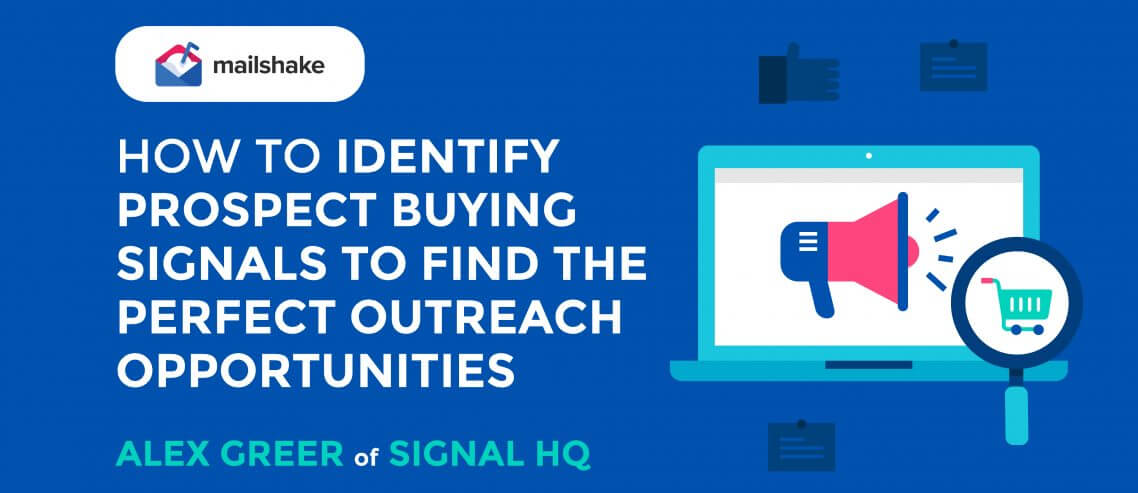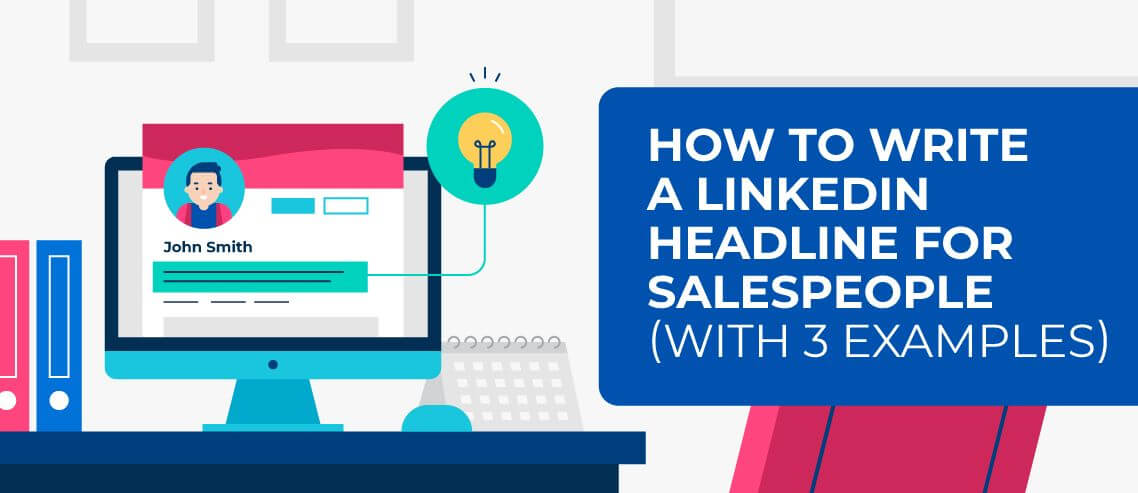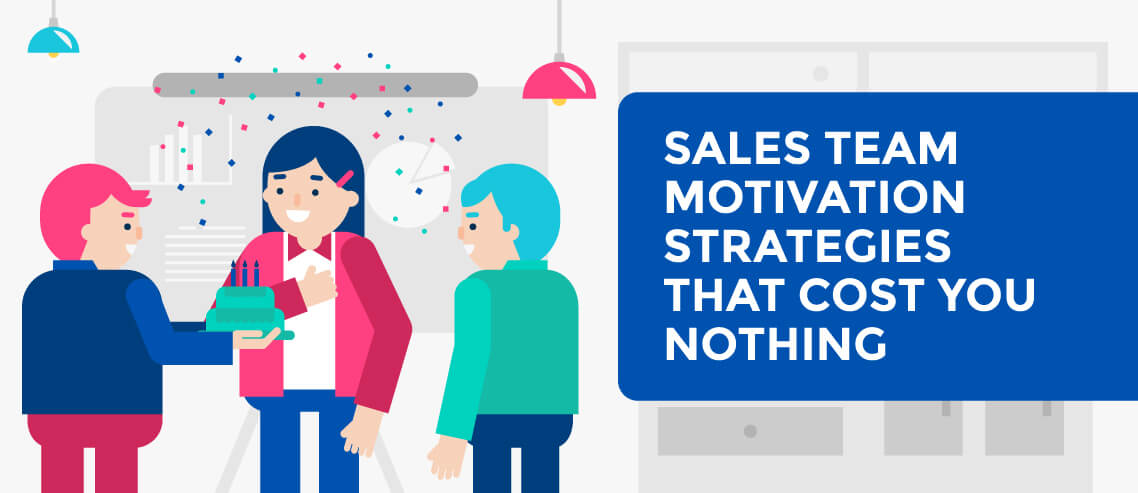How to Identify Prospect Buying Signals to Find Perfect Outreach Opportunities

Contents
When we talk about sales outreach, lots of focus is placed on capturing an email address or phone number.
But a lot of things have to happen before a prospect is prepared to give up their contact details. These steps – or buying signals – help us to separate the red-hot opportunities from the merely lukewarm.
To give you some vital insight into these all-important signals, I recently sat down with Alex Greer, founder and CEO of Signal HQ, a company intelligence solution for account-based sales and marketing. These guys really understand how to search for the right buying signals and use them to reach prospects at exactly the right time.
Read on for the key takeaways from our conversation, and check out our whole conversation in the video below.
[lyte id=”pWJkvwDcqUY” /]
What Is a Buying Signal and Why Should You Care? (1:54)
You might know them as “buying signals.” Or maybe you call them “trigger events.”
Either way, they refer to the same thing: all the stuff that happens upstream in the buyer journey – before a user downloads your ebook, registers for a product demo, or even visits your website for the first time.
Buying signals for your prospects won’t be the same as for Mailshake’s prospects. We sell different products, so our users act in a different way. But common examples could include:
- Someone in your network being promoted into a new position with buying / decision-making responsibility
- A company matching your ICP hiring for a specific position, or several new positions
- A new project being announced by a company matching your ICP
- An office expansion, relocation, or opening of a new branch by a company you’re keen to sell to
So why should you care about what your would-be prospects are doing if they haven’t even started interacting with you yet, if they potentially haven’t even heard of you?
Because finding a prospect counts for nothing if you don’t contact them at the right time. While signals like those I’ve listed above might not have anything to do with your brand or product, if you interpret them in the right way, they can be a fantastic indicator that a prospect is ready – or will soon be ready – to make a purchase.
As Alex puts it, identifying a prospect is “often where the science of the outreach stops.” He continues: “It’s like going and grabbing all the relevant titles about the accounts that I’m responsible for and then shooting them out a one-off email or a sequence of emails trying to get a hold of them.”
Rather than bombarding potential prospects before they’re ready to buy, Alex urges brands to ask themselves a question: “How can you nail the timing piece so that you’re not diluting your own message and hitting these people over and over again, and drowning yourself out in the event that there might be some interest?”
I’ve Got My ICP, but How do I Figure Out My Buying Signal? (5:35)
So you understand the value of buying signals. You’re on the lookout for them. That’s a good start. But how can you be sure you’re searching for the right signals?

Alex says: “The first thing I always ask our customers when we start talking about this is: are there particular types of movement that really lead to a ripe opportunity? For some companies, a certain type of signal is more relevant than another one.”
Let’s take Mailshake as an example. We sell to companies with Sales Development Representative teams, so it’s useful for us to know if a company is hiring for an SDR role. Even more so if we know they’re hiring for a manager, or a director or VP of inside sales.
“That tells you that the company is really starting to make moves to invest in that function,” says Alex. “And usually when they’re investing in the headcount, they’re also investing in technology.”
How to Detect Buying Signals in the Wild (7:02)
Of course, knowing what to look for is only part of the battle. You need to know where and how to look, too.
Fortunately, there’s a whole host of tools that’ll do a lot of the legwork for you. Some of them will even do it for free.
Alex says he and the team at Signal HQ set up Google Alerts using Boolean search strings to find companies that are opening new offices or expanding one of their existing facilities. If they’re targeting a specific brand, they’ll add their name into the search too:

That way, when an article is published that matches those search criteria, you’ll be notified about it. “You can reach out at that time and not only offer your solution, but just offer to be a resource in general and separate yourself from being a vendor to more of a trusted solution provider,” Alex says.
Signal HQ uses another free Google tool – Google Jobs – to quickly identify when relevant companies are recruiting for key positions.
As for paid tools, Alex recommends LinkedIn Sales Navigator, thanks to its advanced search functionality. You can set up an advanced search for people in the U.S. working in the tech industry with a job title that includes a certain seniority – such as director, VP, or manager – and a specific role, like “inside sales” or “business development.”

That’ll give you a usable list of prospects – but you can take this one step further by filtering for people who have changed jobs in the last 90 days. Save this search and you’ll be notified every time someone new matches your search criteria.
All salespeople should take the time to learn about Boolean strings, Alex says. “A lot of people leave a lot of functionality on the table in general with the tools they have at their disposal. One of the things I’d recommend to your audience, especially in sales development, is to really learn about advanced search functionality and Boolean searches. You’ll get a lot more focused results if you know how to master it.”
Once you’ve found a prospect, don’t get carried away. Don’t scare them off.
Let’s say you’re reaching out to someone who’s just started a senior role at one of your target companies. Chances are they’re going to get a lot of generic “congrats” messages and a lot of people trying to sell them something.
Alex recommends slowing down and keeping your messaging simple: “You don’t want to overwhelm them because they’re probably going to get hit with a lot of people. Say ‘We notice people in this role, we help people in this role, when you’re ready, we’d love to have a conversation and see how our solution can help you and your team.’”
Who’s Kicking Ass at Identifying and Leveraging These Signals? (11:50)
When it comes to finding and reaching out to prospects right at the point where they’ve started to show buying signals, HubSpot does it better than most.
I should know. I’ve experienced it first-hand. They do it in a way that doesn’t feel salesy or scammy. I don’t feel bad about it; I actually want to talk to them.
When I was Head of Marketing at When I Work, a SaaS company, they saw I’d moved positions. So they got in touch: “Hey, congrats on your new position. Are you using Hubspot or any Hubspot products?”
As it turns out, we weren’t using HubSpot. But they got me on the phone and said: “Here are three ways to optimize what you’re doing.” The sales guy gave me three free tools from HubSpot – he got me hooked on the drug. He knew nothing about my marketing strategy, but one of the tools he shared helped me solve a marketing problem.
We didn’t actually end up moving forward with HubSpot – it just wasn’t the right solution for us at the time – but they were able to start that conversation by simply paying attention to the right trigger events.
Chances are you haven’t got HubSpot’s sales and marketing budget. So you might be asking whether it’s really possible for you to capitalize on buying signals in the same way they do.
But here’s some exciting news: most companies – from small businesses to enterprises – are bad at outreach.
Really bad.
As Alex puts it: “The quality of the average outreach is usually so generic that if you implement some of these tactics you will absolutely stand out from the rest.”
All it takes is some intelligent identification of buying signals, and the ability to craft the right message to reach prospects just as they start to display those signals. A little effort and personalization go a long, long way.





